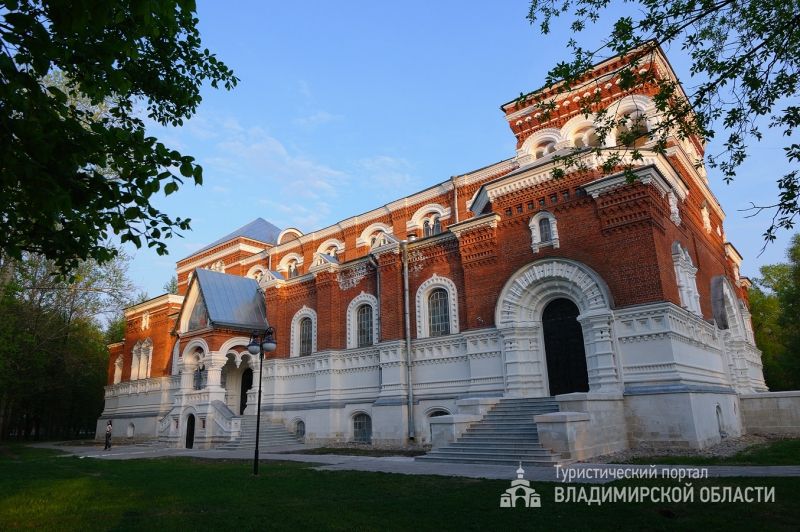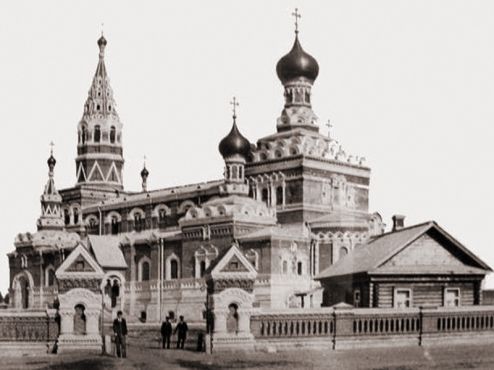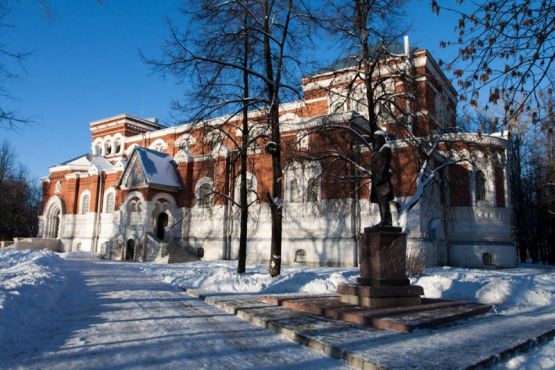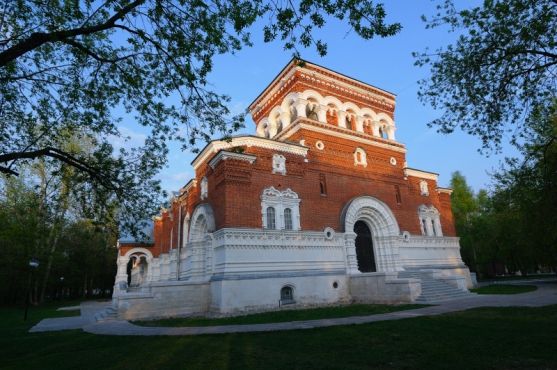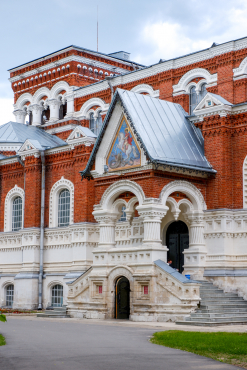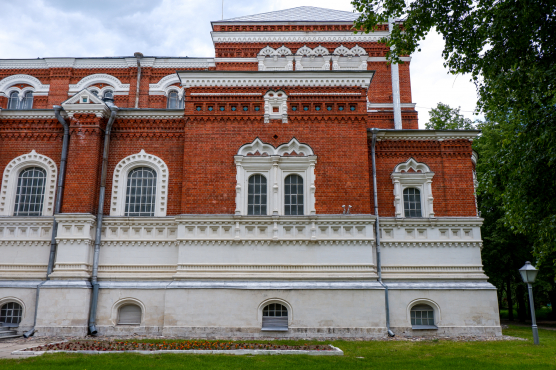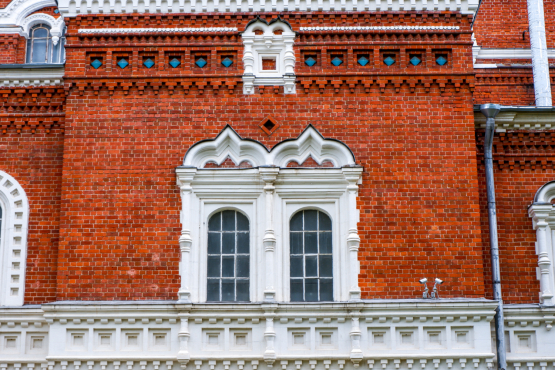St. George's Cathedral
- Address:
- Gus-Khrustalny, Kalinin street, 2a
- GPS:
- 55.61989691, 40.65792934
- Phones:
- +7 (49241) 2-19-30
St. George's Cathedral is the main attraction of the city of Gus-Khrustalny. And not only because today it houses the Museum of Crystal named after the Maltsovs, which became almost a symbol of the city.
The temple itself deserves special attention. The cathedral was built in 1892-1903, on funds of the famous Russian art patron and glass manufacturer Yu.S. Nechaev-Maltsov. And the expenses were considerable, since the cathedral was built according to the project of L.N. Benois, professor of the Academy of Arts and one of the most famous architects of Russia at that time. By the way, the patron himself for many years was an honorary member, and then vice-president of the Academy of Fine Arts. The temple was extremely beautiful and became the pride of not only the city, but the entire Vladimir province. Benois himself noted that this temple is one of his best creations.
St. George's Cathedral is a masterpiece of the "Russian style". It was a grandiose structure with a refectory, side-chapels, tents above the bell tower and porches, galleries. In the design of the facade, the author used original decorative elements of ancient Russian architecture: rows of kokoshniks at the top of the building, beautiful window frames with keeled arches, carved portals, high covered porches with patterned pillars, tiled wall decorations. The combination of natural color of red brick with white-stone decoration makes the building refined and elegant.
The interior of the temple is designed in the style of a basilica with a colonnade of black labradorite. In addition to the traditional church decoration, the cathedral amazed with a huge picturesque canvas (7x7 m) on the western wall – "The Last Judgment" of the famous V.M. Vasnetsov’s brush. Returned here after a long absence, the canvas is now a special interest of specialists and art lovers. The artist painted a few more non-preserved paintings for the cathedral, as well as sketches for the bronze and enamel iconostasis.
A beautiful mosaic "About You rejoices, Blessed", executed according to Vasnetsov's sketch, was performed by the famous St. Petersburg master-mosaicist V.A. Frolov, future performer of the mosaic frieze for Mausoleum of V.I. Lenin, smalt mosaic panels at many stations of the Moscow Metro, etc. Vasnetsov estimated his mosaic work as irreproachable. The mosaic of St. George's Cathedral, made in the technique of polychromatic smalt, gave birth to a picturesque game of color refractions and reflections. The mosaic was restored nowadays and adorns the altar part of the cathedral. This work of art, performed by two famous artists, is valuable for us also with its humanistic, not only religious content. It perfectly embodies the universal image of Motherhood.
When Yu.S. Nechayev-Maltsov, the owner of the Crystal Factory, was asked, why did not he spare the colossal means to decorate the church located in the backwoods of the Vladimir province, he proudly replied that times would come, and here, in Gus, real connoisseurs of Russian art will arrive. The architecture of Benois, Vasnetsov's painting, which has been translated into Frolov's mosaic, are all fused into a brilliant artistic ensemble. The patron's dreams were destined to come true, but only in almost a century.
But in the 1920s, St. George's Cathedral in Gus-Khrustalny, like many churches in the country, underwent significant changes. The dome, the upper tier and the bell- tower were irrevocably demolished. The cathedral, which in its new form ceased to resemble the cult structure, was given for the needs of the "Palace of Labor".
Only after decades, the Vladimir specialists restored white-stone portals, ornamental decorative lattices, carved sections of huge wooden doors. As anew born, multicolored mosaic sparkled in the cathedral. The picture of V.M. Vasnetsov "The Last Judgment" was returned to its place after the most complicated works, made by a group of St. Petersburg restorers under the direction of A.Ya. Kazakov, known for the restoration of the paintings of St. Isaac's Cathedral and the palaces of Peterhof.
But, despite all the efforts and hopes of believers, the cathedral did not become operating. Today St. George's Cathedral in Gus-Khrustalny serves as an exhibition ground, as the Museum of Crystal named after the Maltsovs, included in the association of the Vladimir-Suzdal Museum-Reserve.
The impression of the temple is enhanced by the architectural design of nearby buildings. According to the project of L.N. Benois in 1897, almost opposite the cathedral, an almshouse was built – a one-story building with an arch in the center and a high roof like a tower-room (tereme), crowned with a small head. The composition of the facade closely repeated the decision of the side nave of St. George's Cathedral. Now a second floor has been built up in this building and the city and district administrations are located here. In the late 1880's, one-storey "Maltsov’s houses" in the style of the XVII century appeared to the west and north of the cathedral. They still create a unique color of the city. In 1898, two corps of the male elementary school were built opposite the Cathedral, according to the project of the architect V.A. Pokrovsky, the student and assistant of L.N. Benois and the future Soviet academician. These buildings in their style echoed the structures of L.N. Benois and successfully completed the architectural ensemble. Today they house the Department of Education and the Gus-Khrustalny Historical and Art Museum.
St. George's Cathedral with the Museum of Crystal is the real wealth of the provincial glass-making city. In the evenings, when the temple lights up, this corner of Gus-Khrustalny becomes magically beautiful.
 Tourism portal of the
Tourism portal of the